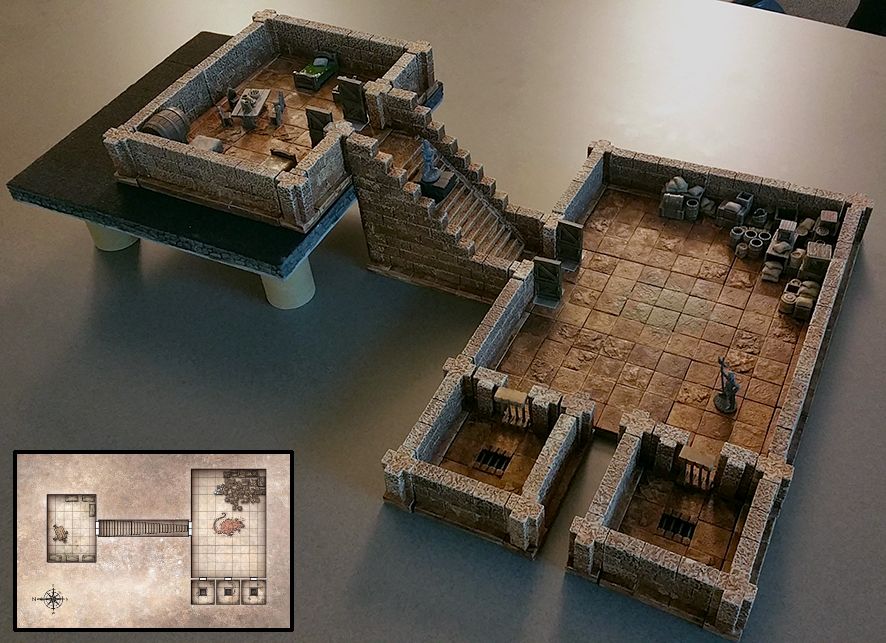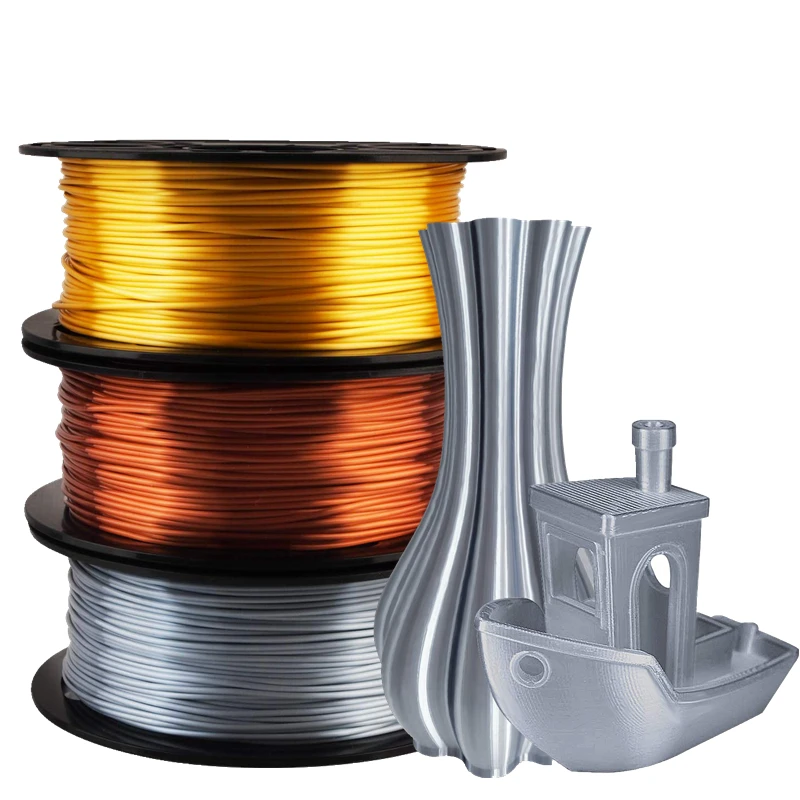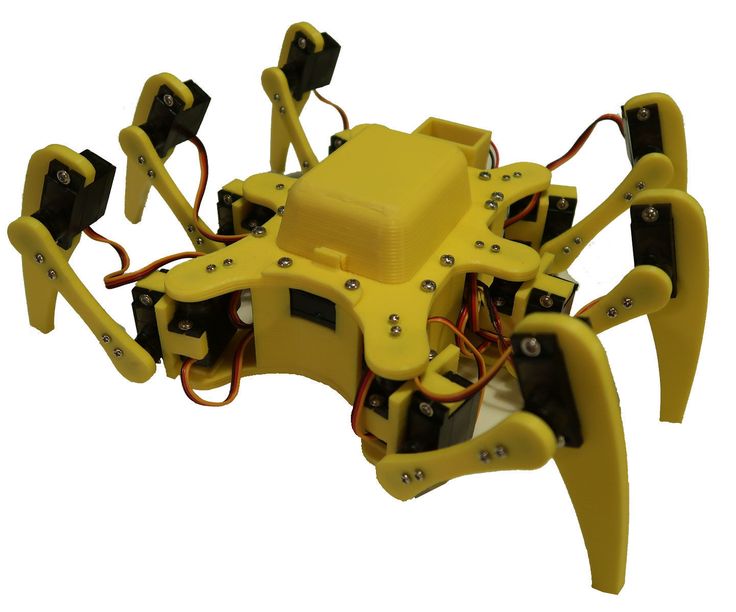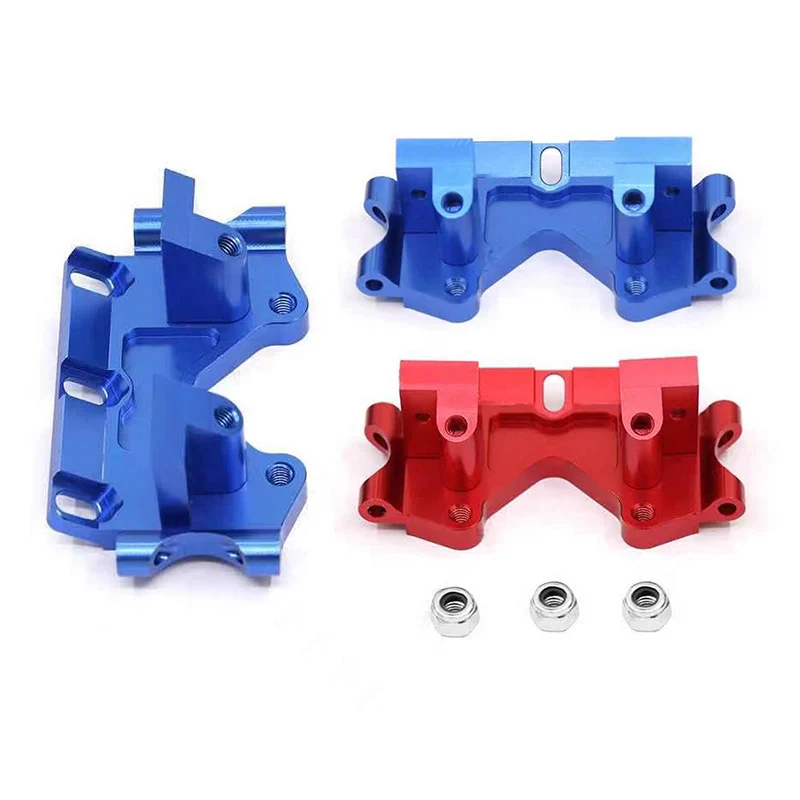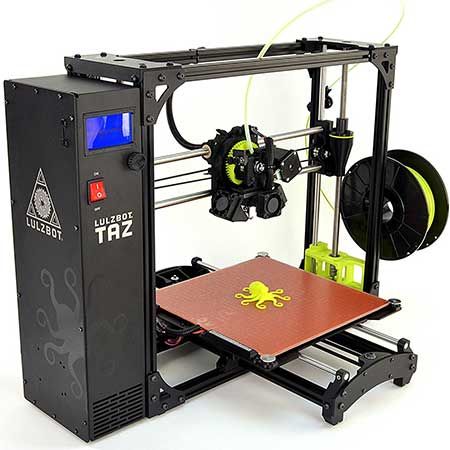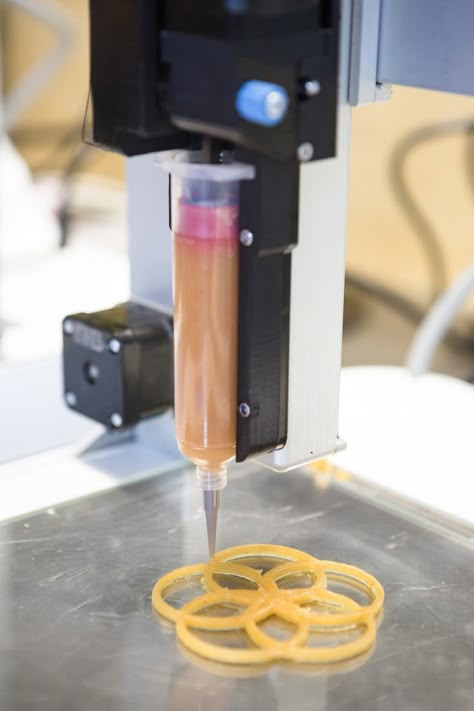Music 3d printing
3D Printing Applications in the World of Music
Published on June 18, 2021 by Alexandrea P.
Next Monday, June 21st is the Fête de la Musique (also known as World Music Day), an international celebration that gives artists the opportunity to take to the streets to showcase their musical talent. In recent years in the music industry, 3D printing has shown a lot of potential as it offers considerable advantages to companies and users who adopt it to carry out their creative projects. From 3D printed music instruments to accessories, to speakers and headphones, additive manufacturing is undoubtedly becoming more and more important in this sector. And as Music Day is just around the corner, we want to get ready for the occasion. That’s why we have compiled some of the best applications of 3D printing in music, and at all levels. Enjoy!
The Travel Sax
If you are a fan of music and like to take it with you everywhere, then this project might just be for you. The so-called Travel Sax is a 3D printed electric saxophone developed by the Spanish company Odisei Music. It is just 8.7 x 5 x 3.1 in (22 x 12.8 x 8 cm) with a weight of about .5lbs (225g), making it ideal for transporting without any problems. In addition to the musical instrument, the pack includes a protective case, an accessory bag, a cleaning cloth, a charging cable, and 3 mouthpiece adapters for soprano, tenor and baritone. To make the sax, the company uses HP’s Multi Jet Fusion technology and they have chosen (PA12) as the material, giving the Travel Sax a uniform and elegant final finish.
Songbird Vinyl
Scheduled for release in October this year, SongBird is a 3D printable turntable kit launched by British startup Frame theory 3D. The Kickstarter Campaign has raised already £25,442, or $35,952 from 167 backers. Customers will be able to choose between either the fully printed kit, which will arrive with all the pre-printed parts, or the “maker” kit, for people who wish to print the parts on the FDM machine. Regardless, the kit will take less than 2 hours to assemble after which you will be able to play full-length records.
Customers will be able to choose between either the fully printed kit, which will arrive with all the pre-printed parts, or the “maker” kit, for people who wish to print the parts on the FDM machine. Regardless, the kit will take less than 2 hours to assemble after which you will be able to play full-length records.
Nik Huber Guitars
Founded in 1996, Nik Huber Guitars is dedicated to the development of handcrafted guitars. It recently carried out a collaboration with Heraeus to 3D print an electric guitar’s bridge, the part that allows the instrument’s string height to be adjusted. Specifically, they used an amorphous metal to achieve lower vibration absorption when playing it, compared to other bridges manufactured in the traditional way. In addition, the company claims that this type of material also provides great strength and durability compared to steel, brass, aluminum or other similar alloys. There is no doubt that the implementation of these technologies has been of great help to NHG.
The 3DVarius Violin
Created in 2015 by French engineer and musician Laurent Bernadac, 3Dvarius (a play on the world-famous stradivarius instruments) is a company dedicated to the development of electric violins through one-piece additive manufacturing. The idea came to life thanks to a Kickstarter campaign that raised more than $59,000 (€50,000). Now, the company has created its own line of 3D printed violins with exceptionally original designs. To date they have 4 different models, the best known being the one that bears his own name, the 3Dvarius, although there are also the Line, Prism and Equinox violins. With this, Laurent Bernadac has shown different musical capabilities of the violin through his Youtube channel and has opened the possibilities for all fans to have their own 3D violin.
The Wave
Anyone who likes to listen to music knows that good speakers can make all the difference. There are speakers in a variety of shapes, colors and sizes. With the 3D-printed “The Wave” (the wave), sound waves become a symbol, so to speak, through loudspeakers. The unique design was created in an engineering and design course by students at the Technical University of Denmark, who had the opportunity to construct this loudspeaker using additive manufacturing in a mechatronics course. The 3D-printed The Wave is powered by a Raspberry Pi and has a WIFI connection so that music can be played directly from the user’s cell phone on the speaker. Those who want to work with additive manufacturing themselves and create the speaker can find out more on the Thingiverse platform.
With the 3D-printed “The Wave” (the wave), sound waves become a symbol, so to speak, through loudspeakers. The unique design was created in an engineering and design course by students at the Technical University of Denmark, who had the opportunity to construct this loudspeaker using additive manufacturing in a mechatronics course. The 3D-printed The Wave is powered by a Raspberry Pi and has a WIFI connection so that music can be played directly from the user’s cell phone on the speaker. Those who want to work with additive manufacturing themselves and create the speaker can find out more on the Thingiverse platform.
Specdrums, mixing music and colors
The goal of Specdrums is to unite the world of colors with 3D printing and music. These small rings created by additive manufacturing, when placed on our fingers, turn any color into music simply by touching it. The sensors are located at the bottom of Specdrums and are able to identify the color you touch, and then send the information to your smartphone, where you can create a melody. You can also choose any sound associated with a particular color, as Specdrums has a large database that can range from piano to animal sounds.
You can also choose any sound associated with a particular color, as Specdrums has a large database that can range from piano to animal sounds.
Open e-drums by Ryo Kosaka
Ryo Kosaka’s open source e-drums project began when he found a Drum Mania controller in a second-hand store. The design student from Kyoto then threw himself into a hobby project in his spare time, which is now freely available to all. Without any expertise, the Japanese man has managed to create an electronic drum kit using Arduino and 3D printing. He says that a 3D printer with a print bed of 150 x 150 mm is sufficient for manufacturing the mesh pads. Alternatively, a laser cutter and MDF can be used to make the 12-inch mesh pads. More information about the project can be found here.
A 3D Printed Electric Guitar
Olaf Diegel made waves a few years ago with his 3D printed aluminum electric guitar. Thanks to both 3D printing and the materials used, the guitar was lightweight and customizable, giving traditional electric guitars a run for their money. Since then, he has expanded quite a bit! Using SLS (using nylon rather than aluminum these days) for the printing and including a core of wood to ensure good sound and support, Diegel offers a number of other cool guitars through his brand ODD guitars. This includes the Xenomorph (inspired by the film Alien) and American Graffiti, as well as a few other 3D printed instruments included a bass, drum kit and even a 3D printed saxophone.
Thanks to both 3D printing and the materials used, the guitar was lightweight and customizable, giving traditional electric guitars a run for their money. Since then, he has expanded quite a bit! Using SLS (using nylon rather than aluminum these days) for the printing and including a core of wood to ensure good sound and support, Diegel offers a number of other cool guitars through his brand ODD guitars. This includes the Xenomorph (inspired by the film Alien) and American Graffiti, as well as a few other 3D printed instruments included a bass, drum kit and even a 3D printed saxophone.
Monad Studio: Futuristic 3D Printed Music Instruments
Monad Studio is an architectural firm that has developed a true masterpiece composed of 5 3D printed music instruments. This piece includes a piezoelectric violin, a didgeridoo, a “monobarisbasitar” which is a kind of small bass, a cello and a hornucopia which resembles a cornucopia (a horn of plenty).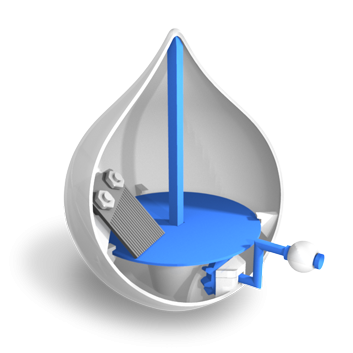 The design of each instrument required between 3 and 6 months of work, while 3D printing took only ten days. The designers claim that finishing and retouching the pieces is required once the part comes out of the printer, but that some instruments could be entirely manufactured using 3D technologies, such as wind instruments.
The design of each instrument required between 3 and 6 months of work, while 3D printing took only ten days. The designers claim that finishing and retouching the pieces is required once the part comes out of the printer, but that some instruments could be entirely manufactured using 3D technologies, such as wind instruments.
Printing Your Heartbeat
In 2016, a very special project was implemented. Polish DJ Piotr Bejnar had a vision to better involve his audience in his music by using the heartbeat of them. According to Bejnar, the heart is a natural drum, which is why its rhythm is perfect for producing music. To implement his Heartbeats Project, he resorted to 3D printing. Using the Zortrax M200, it was possible to cost-effectively produce wristbands that could be distributed throughout the audience and wirelessly send the heart’s pulse to the DJ booth. Definitely an exciting application of 3D printing in music!
3D Printed Mouthpieces from SYOS
French startup SYOS (Shape Your Own Sound) develops 3D printed saxophone and clarinet mouthpieces in order to give musicians the best sound possible. Each mouthpiece is custom-made and designed according to the advice of an acoustic expert. The mouthpieces come in multiple colors and are made from ABS. Each musician can try his or her mouthpiece for 30 days. Today, the French startup works with more than 500 musicians per month.
Each mouthpiece is custom-made and designed according to the advice of an acoustic expert. The mouthpieces come in multiple colors and are made from ABS. Each musician can try his or her mouthpiece for 30 days. Today, the French startup works with more than 500 musicians per month.
LEET Synthesizer
Designed by Swedish engineer Johan Von Konow, the LEET Synthesizer is an open-source synthesizer that users can create at home. In total, the small electronic instruments can be made for only 6 dollars, though note that you do need some basic skills in soldering and programming embedded electronics. The synthesizer itself is made out of a colorful 3D printed shell (inspired by the computers of the 70s), housing a printed circuit board (PCB). Von Konow designed it to be simplistic and fun, with a retrofuturistic feel and can be printed in 4 hours max, plus 2 hours of welding.
Node Audio
Node Audio is a UK-based company that offers quality speakers and audio experience. Its first product, Hylixa, was designed in part via additive manufacturing and specifically through the SLS and MJF processes. The Hylixa speaker is surprisingly shaped: instead of having flat panels and square edges, it features a sort of helix that gives it a rounded shape. This more complex geometry could not have been manufactured otherwise than by 3D printing. The head is 3D printed with glass-fiber filled nylon, a material that has very good acoustic properties. The feet and neck of the speaker are made on a HP Multi Jet Fusion machine.
Its first product, Hylixa, was designed in part via additive manufacturing and specifically through the SLS and MJF processes. The Hylixa speaker is surprisingly shaped: instead of having flat panels and square edges, it features a sort of helix that gives it a rounded shape. This more complex geometry could not have been manufactured otherwise than by 3D printing. The head is 3D printed with glass-fiber filled nylon, a material that has very good acoustic properties. The feet and neck of the speaker are made on a HP Multi Jet Fusion machine.
Amanda Ghassaei and her 3D printed music
Engineer Amanda Ghassaei has developed a technique for converting digital audio recordings into 3D printable LPs. These can be played on ordinary turntables. To complete this crazy project, she used a Stratasys Objet Connex 500 printer and wrote her own program for the 3D modeling part. The engineer admits that the sound quality is poor but it’s still a success!
3D printed speakers made out of sand
For those who want a change from standard speakers, DEEPTIME offers a stylish option: 3D-printed speakers made of sand with a shell-shaped design. DEEPTIME, a Polish startup that is a design and engineering studio, is perfectly equipped to design such speakers. After initial failed attempts to additively manufacture the speakers with wood, the company then turned to researching additive manufacturing with sand. In a joint interview, the two founders, Ondrej Chotovinsky and Martin Hreben, provide more insights and talk about their ideas, processes and challenges.
The indestructible 3D printed guitar from Sandvik
There are 3D printed music instruments that both contain 3D-printed parts or have been entirely made using additive manufacturing. Swedish company Sandvik wanted to take this trend even further and was able to design the first 3D-printed indestructible guitar in 2019.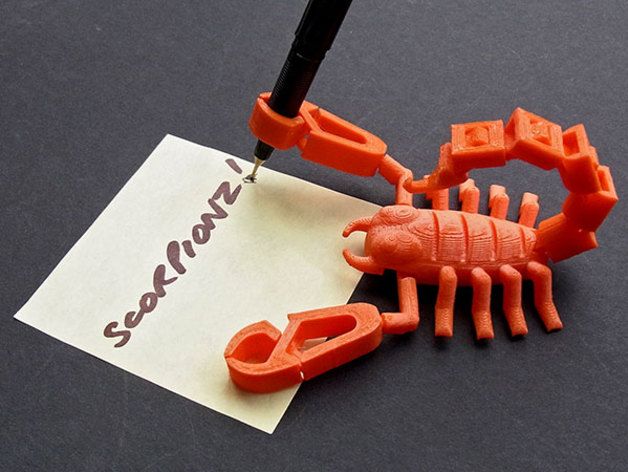 In fact, even after much effort, this one couldn’t be demolished by Swedish guitarist Yngwie Malmsteen during a live performance. But how could this be? During the design process, special attention was paid to the guitar neck and fingerboard, as these are the most unstable areas of a guitar. These were milled from solid bars of recycled stainless steel. For the guitar body, on the other hand, Sandvik used titanium powder in metal 3D printing to achieve a stable yet lightweight result.
In fact, even after much effort, this one couldn’t be demolished by Swedish guitarist Yngwie Malmsteen during a live performance. But how could this be? During the design process, special attention was paid to the guitar neck and fingerboard, as these are the most unstable areas of a guitar. These were milled from solid bars of recycled stainless steel. For the guitar body, on the other hand, Sandvik used titanium powder in metal 3D printing to achieve a stable yet lightweight result.
What did you think of our list of 3D printed music instruments and applications? Do you think there’s anything missing? Let us know in a comment below or on our Facebook and Twitter pages. Don’t forget to sign up for our free weekly Newsletter, with all the latest news in 3D printing delivered straight to your inbox!
Pushing the boundaries of technology
Overview: what is it possible to 3D print in the music industry?
A lot of experimentations are made on different levels inside of the music industry in order to use additive manufacturing. Here are the most promising ones:
Here are the most promising ones:
- 3D printed records
Here is an initiative that could please some records enthusiasts. For the moment the quality of the sound is not good enough. However, tests are quite promising and at least, we now know that it is possible to 3D print music!
- 3D printed speakers
Aleph 1 is the proof that 3D printing can also impact the sound system business. It is now possible to get speakers with amazing designs thanks to 3D printing.
- 3D printed headphones
For example, it is possible to get headphones adapted to any morphology or earbuds custom-made, thanks to the additive manufacturing technologies. Check out our customer story with AudioQuest’s for more details about 3D printed headphones.
- 3D printed musical instruments
Obviously, to make music you need musical instruments, and we will see that it is possible to make amazing 3D printed instruments. It is actually possible to print various instruments, from wind instruments to string instruments or even percussions.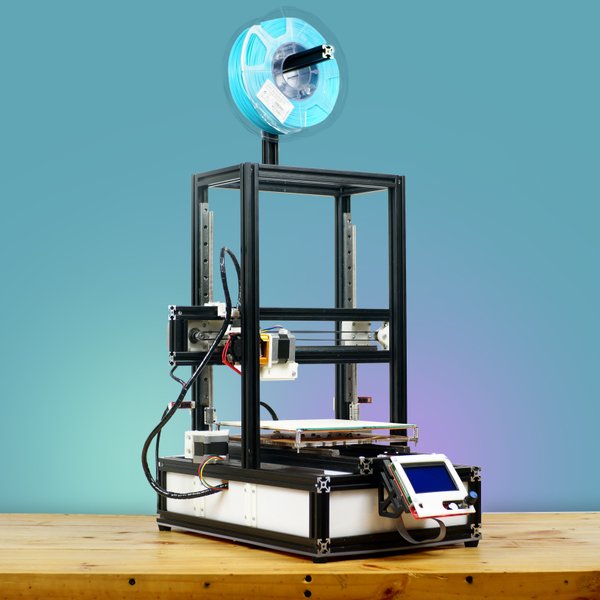
Why can it be a good choice to 3D print musical instruments?
3D printing as an alternative to traditional manufacturing
3D printing can be used to create replications of existing instruments or instrument parts, at a lower cost. For example, with this technique you could recreate the missing part of an instrument at a lower price. But it can also be used to produce and in this case, this technology appears to be a manufacturing technique like another. Using additive manufacturing allows to work with other materials, with a cheaper process.
A great method to work on designs
Additive manufacturing is an amazing technology, that allows to work on crazy instrument designs. For some musicians, the look of their instrument is a priority, because it has to match with the imagery of their music. As 3D printing gives a lot of freedom on this aspect, it appears to be an interesting solution. Astonishing guitar designs like the one in the video below, are easier to produce with this manufacturing technique.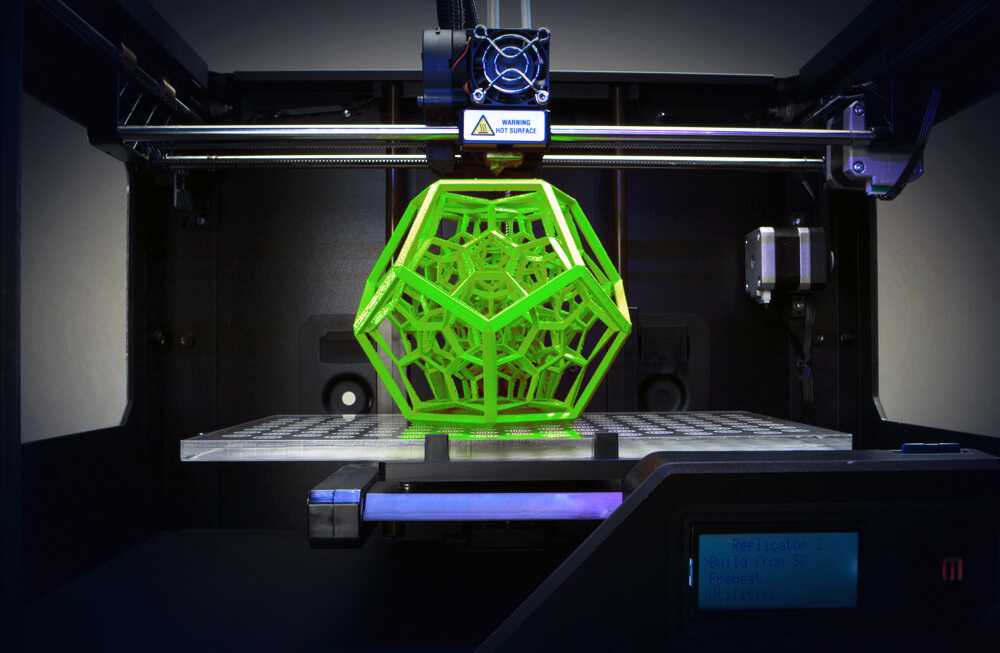
It is an effective way to transform quite faster customer requirements into real printed products We will see later in this blogpost that 3D printed instruments can have really complex shapes. Some designers are making the most of this technique to create instruments with an atypical and futuristic look, impossible to create with traditional manufacturing methods.
One of the biggest advantages of this technology is that it will improve your product development process. It is possible to work and rework on a 3D design before 3D printing it.
Additive manufacturing is allowing mass customization
Additive manufacturing also allows mass customization. Using it to create instruments is a good way to create musical instruments adapted to the needs of the musician. For example, thanks to 3D printing, it’s possible to make lighter instruments.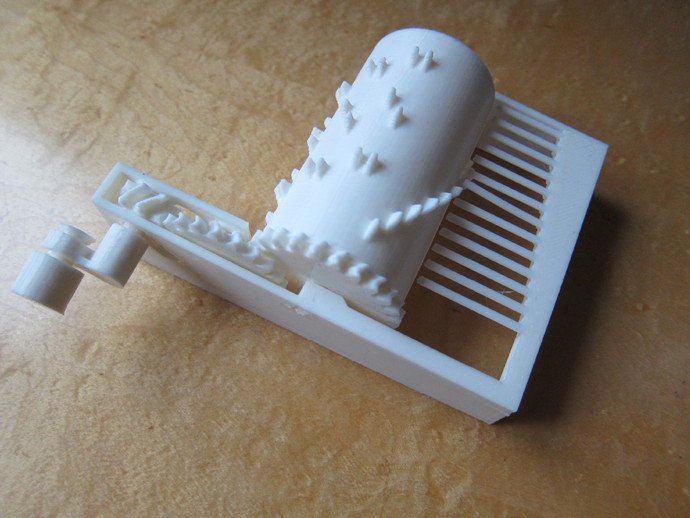 Some instruments such as saxophones or even some Les Paul guitars are quite heavy, and it can become a real problem over time. By choosing the right 3D printing material, you could make instruments that will improve the comfort of the musician while playing.
Some instruments such as saxophones or even some Les Paul guitars are quite heavy, and it can become a real problem over time. By choosing the right 3D printing material, you could make instruments that will improve the comfort of the musician while playing.
What 3D printing material to create an instrument?
A wide range of 3D printing materials is available on the market, it totally depends on your needs and your project. Olaf Diegel, that you will meet numerous times in this blogpost, uses nylon to 3D print his instruments. He is working with the Selective Laser Sintering technology. If you want more information about SLS and all the 3D printing materials available with this technology, check out our SLS page.
But it is possible to 3D print instruments with other techniques and materials. For example PLA plastic and FDM 3D printing have been used to create some instruments from the MONAD Studio that you will see in this article.
Other example: the violin manufacturing 3Dvarius is 3D printing with resin material, using stereolithography.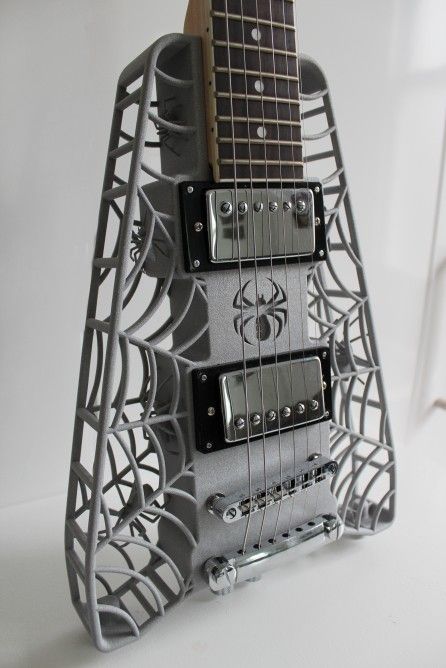 Each project has special requirements and needs a different 3D printing material.
Each project has special requirements and needs a different 3D printing material.
3D printed instruments: the most impressive creations
3D printed guitars and bass guitars
- Olaf Diegel and his amazing 3D printed guitars
Olaf Diegel is a professor in product development, he is also passionate about new technologies and guitar making. Its 3D printed guitars are amazing by the way they look, but also by the way they sound. They are high-quality guitars, totally customisable. Like a traditional guitar, you can play using chords or just with finger picking, it’s actually possible to reach an impressive sound. In this video, Olaf Diegel shows how he is crafting instruments:
If you are interested in these 3D printed electric guitars, take a look at the ODD guitars website!
You can also see in this video that it is possible to play a wide range of musical genres with these guitars, like with a traditional instrument. Indeed, it is possible to get the right sound to play funk, progressive rock, heavy rock or blues.
Indeed, it is possible to get the right sound to play funk, progressive rock, heavy rock or blues.
- The 3D printed Hybrid Slide Guitar
This 3D printed guitar is a creation of the MONAD Studio, designed by Eric Goldemberg and Veronica Zalcberg with the musician and luthier Scott F. Hall. It is part of an installation called “MULTI”, that includes different 3D printed instruments, playing on complex and disturbing aspects, but also on sound explorations. This guitar totally reinvents the traditional design of a guitar. It has a fretless neck, as this printed instrument is made to play with a slide technique.
If you’re interested in the sound of this atypical instrument, you can listen to it here:
- Olaf Diegel is creating guitars, but also 3D printed bass guitars
The sound and morphology of the instrument are obviously different, but Olaf Diegel offers the same possibilities. It is possible to adapt the design of the 3D printed instrument according to the tastes of the musician. Here is an example with the Atom 3D printed bass guitar.
It is possible to adapt the design of the 3D printed instrument according to the tastes of the musician. Here is an example with the Atom 3D printed bass guitar.
- A student 3D printed the body of a bass guitar
A student decided to create a custom bass guitar body for a school project and he made a complete video about it. He created and assembled it by himself. This 3D printed instrument is fully functional.
You can watch this video to understand the creation process and see a little demonstration.
3D printed pianos and melodicas
- 3D printing a piano: the example of the Lucid – EXO piano
This impressive instrument comes from the same installation as the 3D printed Hybrid Slide Guitar that we saw previously. This futuristic piano is designed by Eric Goldemberg and Veronica Zalcberg from the MONAD Studio.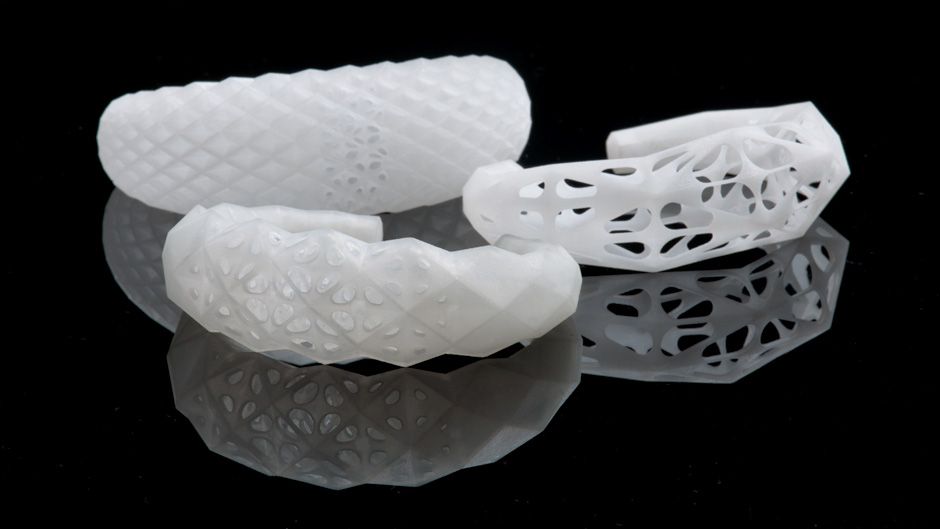 Because of its size, 3D printing a piano is quite a challenge.
Because of its size, 3D printing a piano is quite a challenge.
To listen to the sound of this 3D printed piano:
- A Steinway piano with 3D printed parts
This example is showing that even a big piano manufacturer such as Steinway is taking seriously the growing use of 3D printing technology. These 3D printed parts don’t have any impact on the sound of the instrument, it is only decoration. Indeed, the 3D printed porcelain parts are here to innovate on the final aspect of the piano. It shows that new technologies and tradition can be used together, to work on the design of an instrument.
- The first 3D printed melodica
Daren Banarsë is a pianist, but sometimes, he likes to play melodica. He started to do some experimentations to create a 3D printed melodica because he wanted his instrument to look less juvenile and sound more professional.
You can find all the details about his experimentations and the creation of this melodica, here. Daren Banarsë shares all the steps of his experiments on this website, the 3D modeling process, his desktop 3D printer choice, the printing process, the assembly, and the finishing!
3D printed saxophones
- Olaf Diegel and his printed saxophone
This music passionate, that we already know for his 3D printed guitars, also tried to 3D print a saxophone. Once again, his new 3D printed instrument is a success. Olaf Diegel is really gifted when it comes to instruments crafting. This 3D printed saxophone is the result of a meticulous and impressive work. Indeed, this saxophone has 41 components 3D printed in nylon.
Even if it is impossible to sound like a real saxophone made with brass, the sound that Olaf Diegel obtained with this 3D creation is more than correct. You can listen to his demonstration right here:
3D printed violins
- Hovalin: the traditional and 3D printed acoustic violin
Hovalin is a little brand created by The Hovas, a couple offering more than 3D printed instruments: they are actually offering a whole 3D printing experiment. Indeed, there are three different ways to get your printed violin with Hovalin. You can 3D print it by yourself. 3D models are free and available on their website, anyone can download these 3D files and then print them thanks to an online 3D printing service. They are also offering to send the whole kit to their customers, or directly, the finished product.
Their creations stay very close to the traditional look of an acoustic violin, and their sound is really close to the sound of a wood violin.
- The only 3D printed violin that could compete with a real Stradivarius
3D varius is a french violin manufacturer. These electronic violins are based on the same models as the famous Stradivarius violins. They are customisable, and can totally be adapted to the morphology of the musician. But the design can also be modified for aesthetic reasons, in order to match the customer’s tastes.
They are customisable, and can totally be adapted to the morphology of the musician. But the design can also be modified for aesthetic reasons, in order to match the customer’s tastes.
Behind this modern look, there is a surprising violin sound. You should absolutely listen to this amazing performance of the founder of 3Dvarius:
- The futuristic violin of the MONAD Studio
You can now recognize the style of the instruments printed by the MONAD Studio. This 3D printed violin and his astonishing look is also part of the installation “MULTI”.
If you are curious about hearing the sound of this atypical instrument, here is a video for you:
3D printed drums
- ZMorph 2.
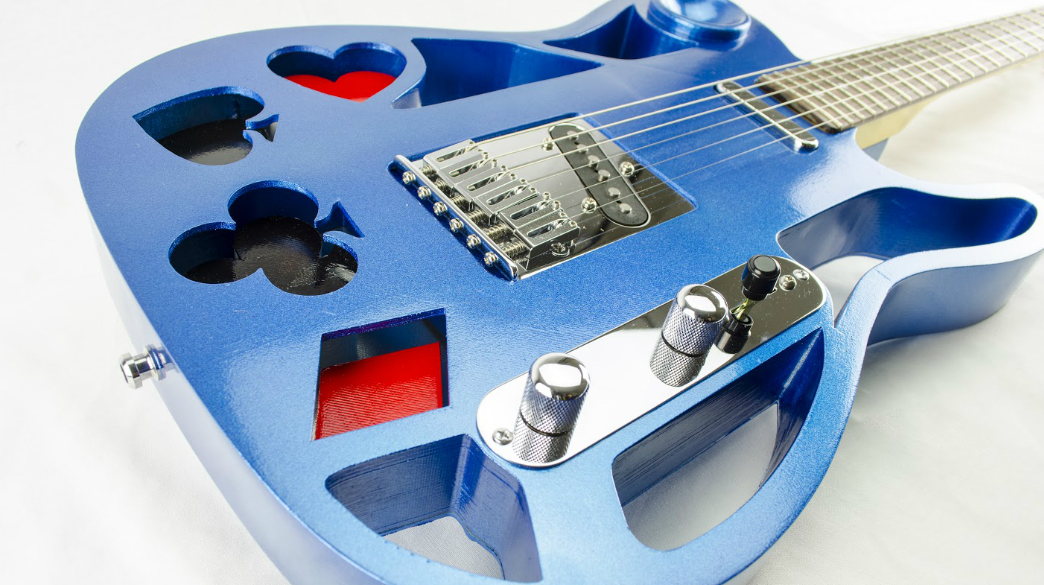 0 S: the amazing 3D printed electronic drums
0 S: the amazing 3D printed electronic drums
3D printed percussions are maybe the most complex instruments to 3D print. A student called Michal Szydlowski created low cost electronic drums thanks to the 3D printing technology. These 3D printed drums are called ZMorph 2.0 S. Michal worked with Autodesk to work on the 3D modeling of his drums. Then he printed the parts of his instrument with different infill, in order to get the right sound for each part.
Watch how Michal created his drums in the video below:
3D printed flute
- The 3D printed acoustic flute by Amit Zoran
This flute has been created by Amit Zoran for a research project. Amit Zoran made this flute in order to show the opportunities offered by additive manufacturing when it comes to acoustic instruments. This researcher built the 3D model of a flute that will be printed in only one part, without any assembly. He had to reinvent the whole instrument in order to get to this result.
He had to reinvent the whole instrument in order to get to this result.
- The 3D printed flute, a real revolution for the music industry?
Researchers are interested in 3D printed flutes. The University of Wollongong Australia is working on the possibilities offered by 3D printing in the musical sector. They are studying how changing technologies can impact culture and society. During these researches, they created custom 3D printed flutes able to play microtonal tunings, normally unavailable on traditional instruments.
If you are interested in this project, you can check this video for more information:
3D printed ukulele
- Hovalele offers the opportunity to print a ukulele
It is the same process as for Hovalin. The Hovas created Hovalele, a simple platform allowing you to get a great 3D printed ukulele. As for their 3D printed violin, they are offering their customer three different ways to get a 3D printable ukulele.
As for their 3D printed violin, they are offering their customer three different ways to get a 3D printable ukulele.
With all of the 3D printed instruments that we saw in this blogpost, you could totally make a band with 3D printed instruments only! Find out a good example in the video below:
Is the 3D printing technology mature enough to 3D print instruments?
We can totally say that 3D printing is now mature enough to create real musical instruments, and not only fake ones for wall decoration. There are now functional instruments, with great sounds and qualities. Once again, 3D printing appears to be the best solution to work on designs. It shows the degree of accuracy and performance of this manufacturing technology.
We can see that some instruments seem to be more perfectible than other ones. 3D printed violins and guitars seem to be the most successful experiments for the moment.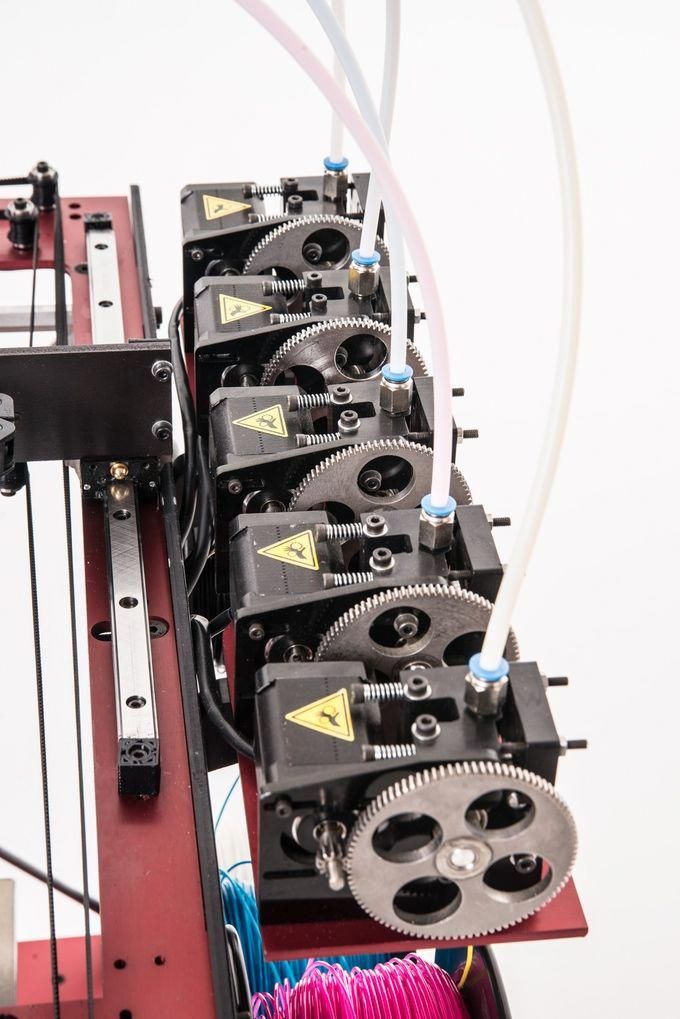 Even if it can be complicated to reach the warm sound of a wood instrument, the first result obtained for these electronic instruments are good. For the moment, it is still very complicated to create acoustic guitars with these manufacturing techniques.
Even if it can be complicated to reach the warm sound of a wood instrument, the first result obtained for these electronic instruments are good. For the moment, it is still very complicated to create acoustic guitars with these manufacturing techniques.
Needless to say, most of these projects are made to push the boundaries of 3D printing technologies. Indeed, a lot of these projects are made by designers, students or researchers. Musical instruments getting out of 3D printers is quite a big change for the musical industry, but it could become more common in the future.
At Sculpteo, we are curious about your opinion regarding 3D printed instruments. Leave a comment to share with us your impressions about these creations. Are you ready to make a 3D printed record with your future 3D printed instruments?
Music from a 3D printer
Miscellaneous
Subscribe to the author
Subscribe
Don't want
17
Good day.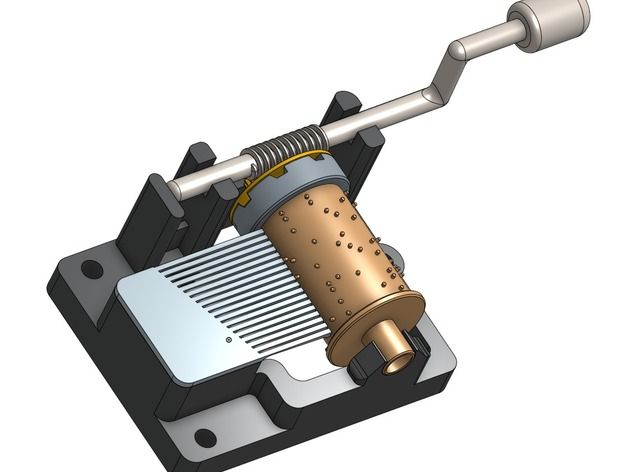
Recently I was puzzled by such a question that it would not be bad to hear when the printer has finished printing and some sound after warming up before printing.
I found the M300 command on the Marlin website, with which you can play a note with a given frequency and duration.
Tried to translate some notes into command data. The printer began to play sounds, but the process of translating notes into commands is already very tedious.
Began to study the question of how this process can be automated.
And I was lucky, I found a small program that converts midi files to text format melodies for old Simens c35 phones. From this format it was already easier to translate into commands for a 3D printer, but it's still not the same.
No matter how much I searched (this topic was also raised here), I did not find better automation, everywhere you need to finish off with handles. Therefore, I decided to write a converter for recording notes for the phone into g-code commands.
In general, this is what happened: Project files
1. Open the Editor.exe program
Select the midi file and save it in a text format.
2. Run the script Converter.vbs
Select the text file created in the previous program.
The script will automatically create a file with the same name and gcode extension.
Commands from the target file can be inserted into the start or end script of the slicer. To check the resulting melody, you can send this file for printing without editing, then the printer will simply reproduce the melody without warming up and without any movement.
The only thing is, due to the fact that the printer can play no more than one note at a time, not all midi files will be played correctly.
You need to select the file so that it has one track and only one sound is played on the track at a time. Of course, all this can be corrected in the midi editor, but that's a completely different story. ..
..
I hope this helps someone
For example, I attached several midi files to the project.
Follow author
Subscribe
Don't want
17
More interesting articles
6
Subscribe to the author
Subscribe
Don't want to
The fog of war is gathering, the howling wind brings disturbing signs - it is time to prepare for battle...
Read more
one
Subscribe to the author
Subscribe
Don't want to
The LIDER-3D website is a place where all the most relevant novelties of the 3D technology industry, modern...
Read more
187
Subscribe to the author
Subscribe
Don't want
Now you can quickly view STL files as 'thumbnail' in Windows Explorer when you select . ..
..
Read more
Good day to you, dear geeks and sympathizers!
According to my observations, almost all owners of 3D printers are divided into two groups: those who need it, and those who really need it. It was with the aim of stimulating the growth of the number of citizens in the second group that this publication was written.
Anyone who is interested in what connects a 3D printer and music, why some old sayings have lost their relevance, and how to turn a simple cardboard into a steel blank - welcome under the cut!
It's no secret that thanks to the efforts of greedy scoundrels effective management and unscrupulous scammers modern marketers, the shelves of audio equipment stores are mostly filled with ordinary garbage, the real technical characteristics of which are skillfully hidden under kilometers of advertising texts with incomprehensible abbreviations and inflated results of some meaningless tests.
What should a lazy and stingy person who wants to buy inexpensive, but high-quality "desktop" speakers do? As in most of these cases, the question already contains part of the answer: the columns need to be done.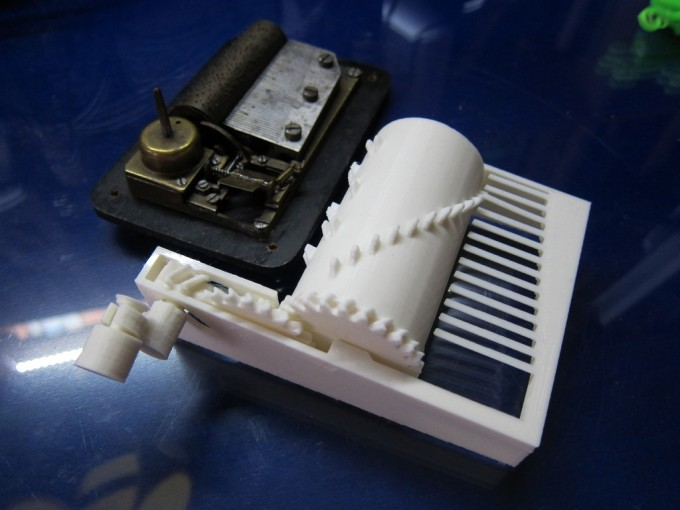
Taking this opportunity, I decided to realize my old dream - omnipolar loudspeakers. These speakers differ from conventional front speakers in that sound waves are emitted simultaneously in all directions with the same amplitude and phase, which in theory should create the most natural sound picture. In its simplest form, this is achieved by placing a diffuser cone on top of the upwardly directed full-range loudspeaker head. The correct calculation of such acoustic systems (hereinafter referred to as AC) is not an easy task and requires serious education in this area. Therefore, I chose the oldest method of conducting research incomprehensible garbage complex processes - empirical. Simply put, you will have to act at random and at random, with alterations and design improvements in the manufacturing process.
The most important component of any speaker, which cannot be modified at home, is the loudspeaker head (hereinafter referred to as HG). Since I decided to make a compact and inexpensive single-way speaker, choosing a head turned into a non-trivial task with many unknowns.
For myself, I have developed the following search algorithm: suitable size - bandwidth - uniformity of frequency response and phase response - nominal resistance - price.
The leader of the search was the broadband GG FR88EX manufacturer Fountek:
This driver has an aluminum frame and cone, a wide frequency range, smooth frequency response and phase response. All parameters are given by the manufacturer in the technical documentation:
For the speakers, the simplest design was chosen: a cylindrical body, a GG is fixed on the upper end. A sound-diffusing cone should be fixed above the GG. The design of the case is an acoustic impedance panel at the bottom end, loose sound-absorbing material throughout the volume of the speaker. For the case, a pipe made of thick cardboard with a diameter of 125 mm (corresponding to the dimensions of the GG) was chosen. Self-adhesive bituminous vibration-absorbing mats were glued to the inner surface of the pipe, which made it possible to completely suppress vibrations and the boom of the body.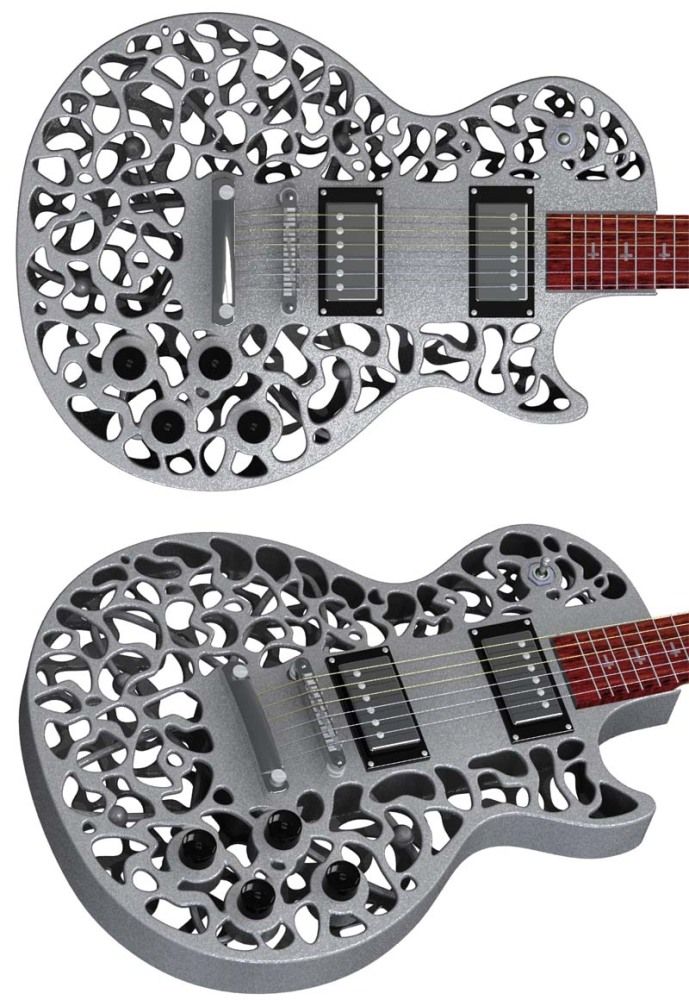 The technology is simple: heating the mats with a hair dryer, we roll them with the sticky side to the pipe from the inside using an aluminum “rolling pin”. The hardest part here is finding a woman with a hair dryer.
The technology is simple: heating the mats with a hair dryer, we roll them with the sticky side to the pipe from the inside using an aluminum “rolling pin”. The hardest part here is finding a woman with a hair dryer.
Further, highly scientific experiments were carried out. In absolute contradiction to the proverb “Measure seven times, cut once”, diffusers were printed, crushed, cut, melted, thrown away and reprinted for the sake of experimental curiosity. By the way, PETG as a material is ideal for printing experimental parts of the speaker.
The conical sound diffuser is the undisputed winner. On the right side of the photo, this cone is visible above the GG, mounted at the end of the case on a plug-holder printed on a 3D printer.
A few words about the design: due to the use of dissimilar materials and the complex shape of parts, I excluded gluing with some kind of veneer or similar material as unnecessarily labor-intensive. The black color was considered boring, the silver color was considered vulgar.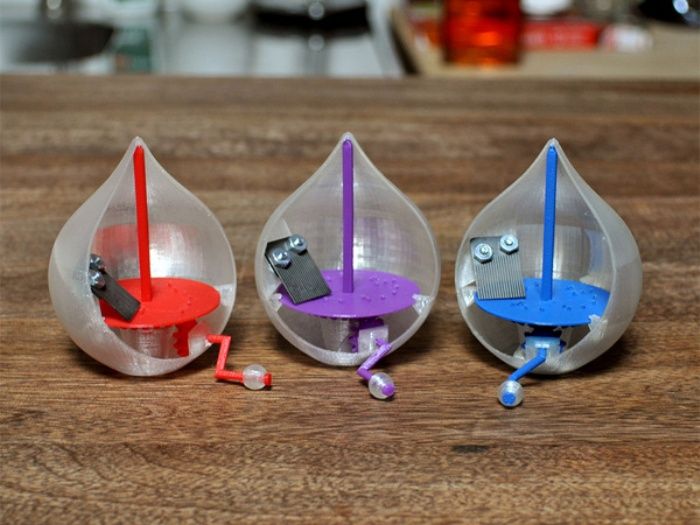 I decided to make my modest contribution to the creation of the post-apocalyptic universe and give the AU the appearance of a battered military equipment created using radioactive materials.
I decided to make my modest contribution to the creation of the post-apocalyptic universe and give the AU the appearance of a battered military equipment created using radioactive materials.
The process of creating parts of the speaker looked like this: creating a model in DesignSpark Mechanical - printing on a 3D printer - cleaning the part - priming - painting. At the same time, in the process of priming the AC case, the wet primer was partially erased with fingers, which ensured the presence of distinct traces of metal corrosion hello Spider . The parts were painted in several stages: first, the parts were painted with stainless steel effect paint and thoroughly dried on the heated working platform of the printer. The next layer was applied transparent varnish, followed by drying for 24 hours. The last layer was applied paint "khaki forest green", roughly corresponding to the color of the old Soviet military equipment. After two hours of drying, you can begin to create the effect of worn metal.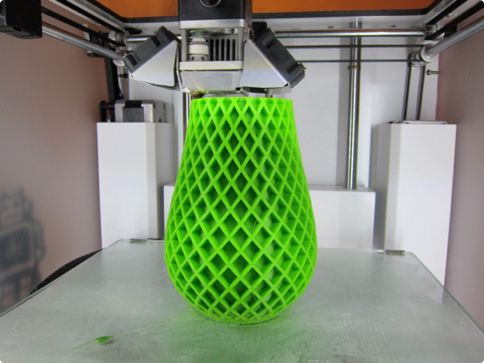 To do this, with a piece of cloth soaked in acetone, you need to carefully wipe off the last layer of paint from protruding parts, edges, roundings, edges and “corroded” surfaces. As they say, it's better to see once:
To do this, with a piece of cloth soaked in acetone, you need to carefully wipe off the last layer of paint from protruding parts, edges, roundings, edges and “corroded” surfaces. As they say, it's better to see once:
A very intricate detail: a bottom cap with an acoustic impedance panel grille and a panel for fixing cable connectors.
After painting and drying, one speaker was assembled to check the sound quality. The next photo shows a part of the structure: the M3 studs are passed through the end cap - the holder and the holes in the flanges of the GG and the sound-diffusing cone. All parts are secured with M3 flange nuts. The cone is fixed high enough above the GG: this position was determined experimentally by the maximum of reproducible high frequencies.
Unfortunately, in this case, the considerable length of the relatively thin studs resulted in significant vibration of the diffuser cone.
As a measure to eliminate this unpleasant effect, I decided to make the sound diffuser heavier and “muffle” by filling it with loose vibration absorber.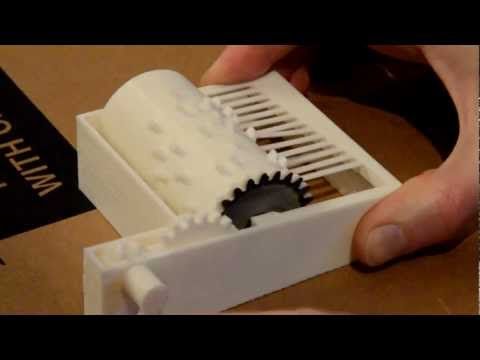 Since the volume of the cavity of the sound diffuser cone is small, an additional hollow part with a cap was designed and manufactured:
Since the volume of the cavity of the sound diffuser cone is small, an additional hollow part with a cap was designed and manufactured:
A mixture of lead shot and fine quartz sand was chosen as a filler. Lead was chosen for its high specific gravity, and fine quartz sand suppresses vibrations well and prevents the shot from turning the cone into a rattle. Due to the presence of lead in the cone, the cap with the radioactivity symbol is not only decorative, but also a functional element (lead contains a certain amount of radiogenic isotopes).
The final version of my homemade omnipolar speakers looks like this:
Unfortunately, on this optimistic note, my camera gave its soul to God, and more photos did not come out. The sound quality of these speakers fully meets my needs: gray everyday life melts into the enchanting sounds of “Spente le stelle” by Emma Shapplin already at a third of the available volume, and if you wish, you can effortlessly eject from reality along with “Teutonic Terror” from Accept.





